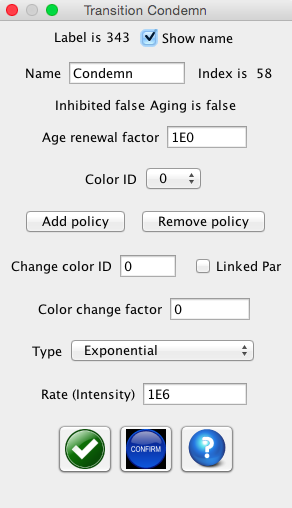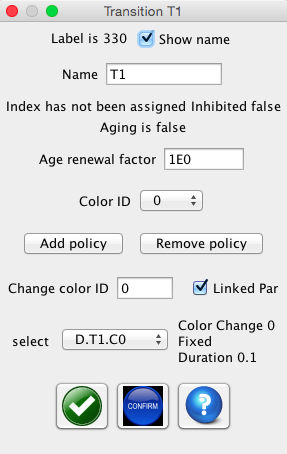
Transitions are depicted with directed arcs and they provide means to move tokens from one place to another. The following property window is displayed if pointer tool is selected from the palette and is double-clicked (see figure)

Transition menu when the property is defined globally